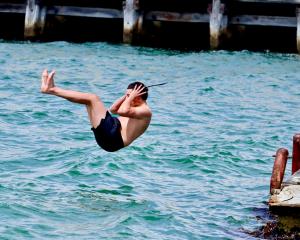
What is prized in one setting can become a pest in another.
This was amply demonstrated recently when members of the Otago Peninsula Swat (Seek Weeds and Terminate) group visited boutique spirit works No8 Distillery.
They met owner Julien Delavoie and delivered some banana passionfruit (Passiflora tripartita).
In its native South America the fruit has been cultivated for centuries both for its fruit and for the beauty of its flowers and vines.
But on the slopes of the Otago Peninsula it is an invasive pest that smothers native trees and attracts pests.
The Swat team is a group of mainly women who have been helping owners get rid of invasive weeds, including the banana passionfruit, on the Otago Peninsula.
Swat member Moira Parker said banana passionfruit vines were introduced to the region in the 1850s as a decorative and exotic plant.
It stayed within gardens for almost 100 years, but by the 1950s it had "jumped the fence" and began to spread across the peninsula, choking out native species and providing a source of food for introduced pests such as rats and possums.
The plant was part of the Otago Regional Council’s site-led pest plant programme, meaning it was designated a pest only in specific areas, which were the Otago Peninsula, West Harbour/Mt Cargill, Quarantine Island and Goat Island.
While efforts to rid these areas of the invasive weed continue, Mr Delavoie said he was interested in experimenting with using the banana passionfruit in a flavoured rum.
He was happy for the group to deliver both the green and yellow fruit to his distillery, where he could use it in the fermentation process "to give an extra taste of banana and passionfruit to the rum".
Even fruit that had been frozen could be used, as about five or six fruit were needed for one bottle of rum, he said.















